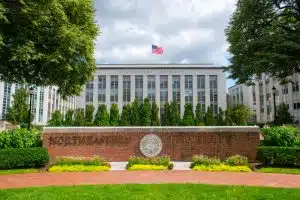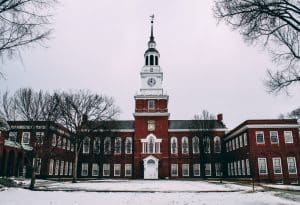The Power of Collaboration Through The TEAMS Competition
The TEAMS Competition is a cutting-edge, multidisciplinary event that challenges students to solve real-world problems in science, technology, engineering, and mathematics (STEM). Organized by the Technology Student Association (TSA), the competition fosters collaboration, problem-solving, and critical thinking skills among high school students while providing a platform to explore and innovate in STEM fields.
The objectives of the TEAMS Competition
Through the pursuit of these objectives, the competition contributes to the development of a new generation of innovators and problem solvers who are equipped to face the challenges of the 21st century. By continuing to inspire students through the competition, we can ensure a brighter future for both STEM and the world at large.
Encouraging collaboration and teamwork
One of the key objectives of the competition is to foster a spirit of collaboration and teamwork among high school students. The competition emphasizes the importance of working together, with teams consisting of 4 to 8 students who pool their knowledge and skills to tackle complex engineering-related problems. By providing an environment that encourages cooperation, the competition helps students learn the value of teamwork, a skill that is essential for success in any STEM career.
Enhancing problem-solving, critical thinking, and communication skills
Another critical objective of the TEAMS Competition is to develop students’ problem-solving, critical thinking, and communication skills. The competition features a multiple-choice test and a design/build challenge that requires participants to apply their knowledge of engineering, mathematics, and science principles in innovative ways.
By engaging in these tasks, students learn to think critically, analyze complex problems, and communicate their ideas effectively. These skills are crucial for future success in the rapidly evolving world of STEM.
Inspiring students to pursue STEM careers
The competition also aims to inspire students to explore and pursue careers in engineering, technology, and related fields. By providing a platform for students to engage with real-world challenges, the competition helps participants develop a deeper understanding of the diverse opportunities available in STEM fields. Exposure to these challenges and the practical application of engineering principles can ignite a passion for STEM careers, ensuring a steady pipeline of talented professionals in the future.
Promoting awareness of the role of engineers and technologists in society
Finally, the competition seeks to promote an understanding of the vital role engineers and technologists play in society and the global economy. By focusing on pressing global issues like energy, transportation, and public health, the competition encourages students to recognize the broader implications of their work in engineering and technology. This increased awareness of the significance of STEM professions can inspire students to become agents of positive change in their future careers.
The history of the competition
The history of the TEAMS Competition is a testament to its enduring mission of inspiring and preparing the next generation of engineers, technologists, and problem solvers. From its humble beginnings to its current status as a nationally recognized event overseen by TSA, the competition has come a long way. As the world continues to face complex challenges, competition will remain a vital platform for nurturing the skills, passion, and innovation required to create a brighter future for all.
The inception of the TEAMS Competition (1988)
The TEAMS Competition was established in 1988 by the Junior Engineering Technical Society (JETS), a non-profit organization dedicated to promoting engineering and technology careers to students. The goal of the competition was to inspire high school students to pursue careers in engineering, technology, and related fields by providing a platform for them to work together and solve complex, real-world problems.
The competition was initially designed as a regional event, but its popularity quickly grew, and it soon expanded to include state and national levels. This expansion allowed more students from across the United States to participate in and benefit from the competition.
The rebranding of JETS and the role of TSA (2011)
In 2011, JETS underwent a rebranding process, resulting in the formation of the Technology Student Association (TSA). The mission of TSA is to foster personal growth, leadership, and opportunities in science, technology, engineering, and mathematics (STEM) for middle and high school students. Today, TSA serves as the overseeing body for the TEAMS Competition, working diligently to ensure that the event continues to inspire students and provide them with valuable skills for their future careers.
The evolution of the competition Format
Throughout its history, competition has evolved to better meet the needs of its participants and to keep pace with advancements in STEM fields. The competition now consists of two main components:
Multiple-Choice Test: This test assesses students’ knowledge and understanding of engineering, mathematics, and science principles. The questions are designed around an annual theme, often inspired by pressing global issues like energy, transportation, or public health.
Design/Build Challenge: This hands-on activity requires teams to design, build, and test a prototype that addresses a real-world problem related to the annual theme. The challenge emphasizes creativity, innovation, and the practical application of engineering principles.
These components have been refined over the years to ensure that the competition remains engaging, challenging, and relevant to the ever-evolving world of STEM.
The impact of the TEAMS Competition
Throughout its history, the competition has had a profound impact on the lives of countless students. The competition has helped participants develop essential skills, such as problem-solving, critical thinking, and teamwork, which are crucial for success in STEM careers. Moreover, the TEAMS Competition has served as a catalyst for many students to pursue careers in engineering and technology fields, helping to address the growing demand for skilled professionals in these areas.
Who can participate?
Students can participate in the competition through their schools or local organizations that have established a TEAMS affiliation with the Technology Student Association (TSA). The TEAMS Competition is open to high school students who have an interest in STEM fields and are eager to tackle complex, real-world problems. To be eligible, participants must meet the following requirements:
- Students must be enrolled in grades 9-12 at a public, private, or home school, or be part of a community organization that serves high school students.
- Teams must be composed of a minimum of 4 and a maximum of 8 students.
- Each team must have an adult coach, typically a teacher or a mentor from a participating organization, who will guide and supervise the team throughout the competition.
Joining the TEAMS Competition
Let’s discuss how you can join the TEAMS Competition. Here are some steps you’ll need to follow:
- Establish a TEAMS Affiliation: The first step to participating in the competition is to establish a TEAMS affiliation with TSA. Schools or organizations interested in forming a team should visit the TSA website to learn more about the affiliation process and complete the necessary registration forms.
- Form a Team: Once a TEAMS affiliation has been established, the next step is to form a team. The team should consist of 4 to 8 high school students who share a passion for STEM and a desire to collaborate on complex challenges. Teams should also select an adult coach who will provide guidance and supervision throughout the competition.
- Prepare for the Competition: After forming a team, it’s time to start preparing for the competition. Teams should familiarize themselves with the annual theme, which is typically announced in the fall, and review the competition guidelines and rules provided by TSA. Teams can also access resources, such as practice problems and study materials, to help them prepare for the multiple-choice test and design/build challenge.
- Register for a Regional or State Event: TEAMS Competitions typically begin at the regional or state level. Teams must register for these events through the TSA website, ensuring they meet any deadlines and adhere to the specific rules and regulations set by the organizing body.
- Compete and Advance: Teams that perform well at the regional or state level have the opportunity to advance to the national TEAMS Competition, held annually at the National TSA Conference. The national competition allows students to showcase their talents, network with other like-minded individuals, and compete for national recognition and awards.
The Competition’s Structure, Format, and Judging Criteria
The competition’s structure, format, and judging criteria are designed to challenge participants and foster growth in essential areas such as problem-solving, critical thinking, creativity, and teamwork. The TEAMS Competition provides high school students with an unparalleled opportunity to develop their engineering, mathematics, and science skills while working collaboratively to solve real-world problems.
Structure of the TEAMS Competition
The TEAMS Competition consists of a series of events that culminate in the national conference. These events include:
- Regional and State Competitions: The competition begins with regional or state-level events, where teams from different schools and organizations compete against each other. The top-performing teams from these events advance to the national competition.
- National Competition: The national competition takes place at the annual National TSA Conference. At this event, the best teams from across the United States come together to showcase their talents and compete for national recognition and awards.
Competition Format
The competition is divided into two main components, designed to test participants’ knowledge, creativity, and problem-solving abilities:
Multiple-Choice Test: This component assesses students’ understanding of engineering, mathematics, and science principles. The questions are based on an annual theme, which is typically inspired by pressing global issues like energy, transportation, or public health. Teams work together to answer a series of multiple-choice questions within a given time frame.
Design/Build Challenge: This hands-on activity requires teams to design, build, and test a prototype that addresses a real-world problem related to the annual theme. The challenge emphasizes creativity, innovation, and the practical application of engineering principles. Teams are given a set of materials, tools, and constraints to work with and must present their final prototype within the allotted time.
Judging Criteria
The TEAMS Competition employs a comprehensive set of judging criteria to evaluate the performance of each team in both the multiple-choice test and the design/build challenge. The criteria include the following:
Multiple-Choice Test Performance: Teams are scored based on the number of correct answers they provide during the multiple-choice test. This score is used to rank the teams and determine which teams advance to the national competition.
Design/Build Challenge Performance: During the design/build challenge, teams are evaluated on several factors, such as:
- Creativity and Innovation: Judges assess the originality and resourcefulness of each team’s prototype, as well as how well it addresses the given problem.
- Functionality and Performance: Teams are scored based on the effectiveness, efficiency, and reliability of their prototype in meeting the challenge requirements.
- Presentation and Communication: Judges evaluate each team’s ability to clearly and persuasively present their prototype, including the design process, challenges faced, and the rationale behind their decisions.
Overall Team Performance: The final rankings and awards are determined by combining the scores from both the multiple-choice test and the design/build challenge. This holistic approach ensures that the winning teams excel in both theoretical knowledge and practical application of engineering principles.
Conclusion
The competition is a testament to the power of collaboration and the incredible potential of our future STEM leaders. By nurturing problem-solving abilities, teamwork, and a passion for innovation, the competition prepares students to address the complex challenges of tomorrow.
As the world continues to evolve, the TEAMS Competition will remain a crucial platform for inspiring the next generation of engineers, technologists, and problem solvers.
How AdmissionSight can help you with college admissions
AdmissionSight is a college consulting firm that provides personalized assistance to students throughout the college admissions process. Here are some ways that AdmissionSight can help you:
Admissions strategy: AdmissionSight can help you develop a strategic plan for your college application process. Our professional consultants can assist with identifying schools that are a good fit for your academic, extracurricular, and personal goals and help you plan and prioritize your application strategy.
Application review: AdmissionSight can review your application and provide feedback on how to improve it. We can offer suggestions on how to make your application stand out and highlight your strengths and unique qualities.
Essay coaching: AdmissionSight can help you craft compelling essays that showcase your personality, goals, and achievements. We can guide you through the essay writing process and provide feedback on your drafts to help you refine your writing.
Interview preparation: AdmissionSight can provide interview coaching to help you feel confident and prepared for your college interviews. Our experts can offer tips on how to present yourself professionally and how to answer common interview questions.
Extracurricular planning: AdmissionSight can help you plan and develop your extracurricular activities to make them more impactful and meaningful. We can suggest activities that align with your interests and goals and provide guidance on how to demonstrate your leadership and initiative.
Overall, AdmissionSight can provide valuable guidance and support throughout the college admissions process to help you maximize your chances of getting accepted into the college of your choice.
With a high success rate of over 75%, we have built a strong network in the past decade. Book an initial consultation today, free of charge!








































